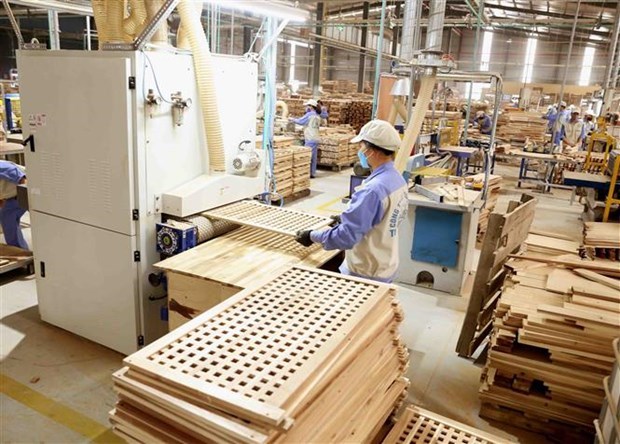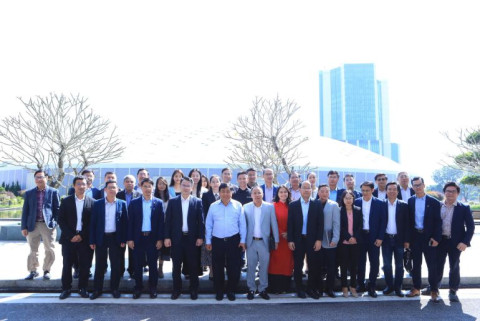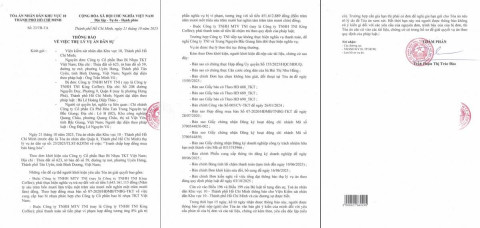Challenges in the digital transformation for the wood industry
- 195
- Business
- 11:18 15/06/2024
DNHN - Many industries are now turning to digital technology to enhance efficiency and boost competitiveness. However, the wood industry, a traditional and classic sector, is facing numerous challenges in its digital transformation journey.

Challenges in digital transformation for the wood industry
One of the biggest challenges the wood industry faces is the lack of a workforce with knowledge and skills in information technology. To successfully implement digital transformation processes, businesses need a team capable of working with new technologies such as artificial intelligence, machine learning, and data analysis. However, this shortage has created a significant gap between the ability to use technology and the practical needs of the wood industry.
Currently, some companies in the wood industry, especially small and medium-sized enterprises (SMEs), have limited technical infrastructure. Investing in new equipment and software to carry out digital transformation requires significant financial resources. This presents a challenge for businesses that lack the financial capability to invest in new technology and improve infrastructure.
The wood industry has existed for many decades with traditional production processes passed down through generations. This creates a traditional mindset that not everyone is willing to change. The delay in adapting to new technologies can slow down the pace of digital transformation in the wood industry.
Moreover, digital transformation in the wood industry requires the collection and processing of customer data, product information, and production processes. Data security and privacy are prominent issues in the digital age, and the wood industry is no exception. Ensuring the safety and protection of critical information requires advanced security measures, which can be challenging and increase costs for the digital transformation process.
To overcome these challenges, the wood industry needs to apply appropriate solutions. First, companies in the wood industry need to invest in training and developing a workforce with knowledge and skills in digital technology. This can be achieved through organizing training courses, collaborating with universities, and specialized training organizations to train and attract quality talent.
Second, the government and funding organizations can provide financial support to companies in the wood industry, especially SMEs, to invest in technical infrastructure and new technology. This could include offering low-interest loans or other incentive programs.
Third, industry organizations and industrial alliances can play an important role in raising awareness about the benefits of digital transformation and promoting acceptance among wood manufacturers. By sharing success stories and positive results from the application of digital technology, the wood industry can drive transformation and change traditional mindsets.
Fourth, companies in the wood industry need to ensure they comply with data security and privacy regulations. Investing in advanced security systems and implementing security policies and procedures will help protect important information and build customer trust.
The low rate of digital transformation in the wood industry
Vietnam's wood processing and furniture manufacturing industry is considered one of the important export economic sectors. However, most businesses in the industry operate on a small and medium scale, mainly focusing on production and processing stages.
Ms. Nguyen Thi Linh Vy, Director of Imity Co., Ltd., also shared the difficulties her company faced in implementing digital transformation. Despite participating in seminars and intending to implement digital transformation two years ago, Imity still has not found a suitable solution, especially for the unique products of the wood industry.
Currently, the number of companies in the wood industry fully implementing digital transformation solutions from design and production to construction is limited to a few prominent names such as AA Corporation, An Cường, Trần Đức, and Trường Thành.
According to Mr. Tran Anh Vu, Deputy Head of Logistics at AA Construction Architecture Joint Stock Company, the company started digital transformation in 2009 and continues to update new versions. However, using too many software applications also brings challenges and limitations.
Mr. Ha Tat Thang, Director of Techworld Technology Solutions Co., Ltd., with over 15 years of experience in supporting businesses in implementing management systems and digital transformation, noted that the wood industry is currently outside the focal point of digital transformation, particularly among participating enterprises.
"The main reason is that a large number of businesses in the industry still operate on a small and medium scale, primarily focusing on processing and production," Mr. Thang shared.
Additionally, Mr. Thang pointed out that compared to foreign-invested enterprises, most of which have been heavily invested in digital transformation and possess modern management systems, Vietnamese businesses typically start from smaller scales, such as family or private businesses. Therefore, they lack the experience or financial capability to effectively implement digital transformation.
According to Mr. Thang, in the wood industry, the implementation of management systems and digital transformation into production and business activities faces many difficulties and challenges. This issue largely stems from the diverse characteristics of the production process, influenced by the artistic and aesthetic elements of each product.
An Phan
Related news
#Wood products

Vietnam to grant FLEGT licence to wood exports in 2025
Vietnam is set to grant a licence under the Voluntary Partnership Agreement/FAO-EU Forest Law Enforcement, Governance and Trade (FLEGT) Programme to wood exports in 2025, after it completes preparing necessary conditions, reported a government official familiar with the sector.
Đọc thêm Business
From New Year messages of World Leaders to the “new rules” of the Global economy in 2026
At a pivotal moment of transition, New Year messages from capitals such as Hanoi, Beijing, Washington and Paris reflect distinct priorities and strategic visions.
Connecting Leaders, Shaping the Future: Strategic Leadership Planning Meeting – CorporateConnections Hanoi A
"Your network is your most powerful flowing asset. It generates value, multiplies opportunities, and accelerates your influence across borders."
Innovative ESG enterprise: Trạm Xe Việt startup proposes solutions to build a green mobility ecosystem
As Vietnam commits to achieving Net Zero by 2050 and tightens emissions standards, the transportation sector faces unprecedented pressure to transform.
Deputy Prime Minister Nguyễn Chí Dũng: “The country’s major challenges weigh heavily on my mind — and we must resolve them together.
On the morning of November 26, 2025, Deputy Prime Minister Nguyễn Chí Dũng chaired a high-level working session at the National Innovation Center (NIC) in Hòa Lạc.
Unitsky String Technologies signs cooperation agreements with three Vietnamese partners, opening a new direction for smart mobility and sustainable development
The signing ceremony took place in Minsk, Belarus, on November 28, 2025.
Before the D‑day to abolish flat‑rate tax: Fear of technology and costs leave small traders struggling to adapt
From 1 January 2026 the flat‑rate tax regime will be abolished. Small business households will be required to declare tax based on actual revenue. MISA supports the transition with technology to help micro‑merchants adapt smoothly and transparently.
Vietnamese enterprises at a crossroads: the impact of a potential US–China deal
As the world closely monitors every shift in US-China relations, emerging signals of a strategic agreement between the two global powers are raising hopes for global economic stability.
HDBank: Impressive profit growth, leading in profitability and advancing international integration
Ho Chi Minh City Development Joint Stock Commercial Bank (HDBank, stock code HDB) announced its consolidated profit before tax for the first 9 months of 2025 reached VND 14,803 billion, marking a 17% increase year-on-year (YoY).
TNI King Coffee sued for over VND 5 Billion in unpaid debts
On October 21, 2025, the People’s Court of District 10 in Ho Chi Minh City officially accepted a civil lawsuit concerning a commercial contract dispute between TKT Vietnam Plastic Packaging Joint Stock Company and TNI King Coffee Co., Ltd.
VINASME and Jeonnam Technopark Sign MOU on technology cooperation, human resource training, and trade promotion
On October 15, 2025, in Hanoi, VINASME and Jeonnam Technopark (Korea) signed an MOU to promote trade, advance technology transfer, and develop human resources between enterprises of both nations.











